Here’s everything you need to know in order to gain trust and position your business as a leader in the industry.

Source: depositphotos.com
Earning your target audience’s trust is the key to ensuring high conversion and customer retention rates.
According to research, 81% of consumers consider trust a deciding factor when making buying decisions. And the benefits of gaining trust don’t end here. Accenture discovered that 44% of consumers will spend $500 more with the brands they trust. Moreover, 55% of buyers will never give a brand another chance once it breaks their confidence.
With this data in mind, it’s clear that you need to explore ways to work towards building a trustworthy brand. But it also can’t hurt to base that trust on your team’s expertise and dedication to delivering a positive customer experience.
One excellent way to achieve these goals is to employ online content. So, if you’re willing to work to take your business to the next level, here are the best ways to utilize website content to display expertise and gain trust.
Turn Trust Signals into Conversion-Driving Web Content
One of the easiest ways to use website content to build brand trust is to enrich your site with authority-boosting trust signals.
The fascinating thing about this format of content isn’t just that it’s effective for building trust. Consider, for example, the fact that 77% of consumers seek out websites that showcase ratings and reviews. But even more, most trust signals can be easy to acquire and embed on your website, making them the most no-frills way to exhibit expertise and boost authority.
To choose the best type of trust signal to show off on your website, you must first understand what your audience seeks.
For instance, look at a medical alert brand like Bay Alarm Medical. The marketing team behind this business understands that reliability is crucial for converting customers. So, the web design includes an attention-grabbing Google Rating element, a claim that the brand is “America’s most trusted medical alert system” provider. Even the CTA buttons highlight the brand’s credibility, inviting potential customers to try the service “risk-free for 30 days.”
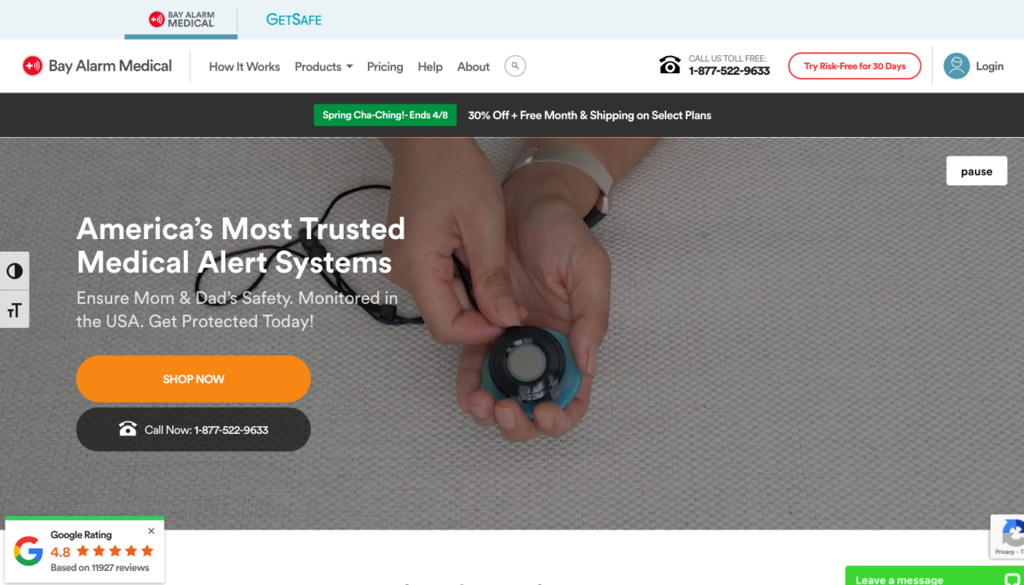
Source: bayalarmmedical.com
An alternative approach would be to leverage media mentions or the logos of successful clients, like Academic Influence did. Knowing that its audience already trusts publications such as the BBC, Business Insider, NPR, and Forbes (as well as that they recognize the authority of organizations like Stanford and Yale), this business added a “Recognized by” section to its homepage, understanding that the names hold a lot of sway over its audience.

Source: academicinfluence.com
Naturally, other trust signals could work for your business and target audience. For example, in ecommerce, adding a list of your accepted formats of payment could infuse customers with a sense of security. Take a look at the example of Mr. Porter below.
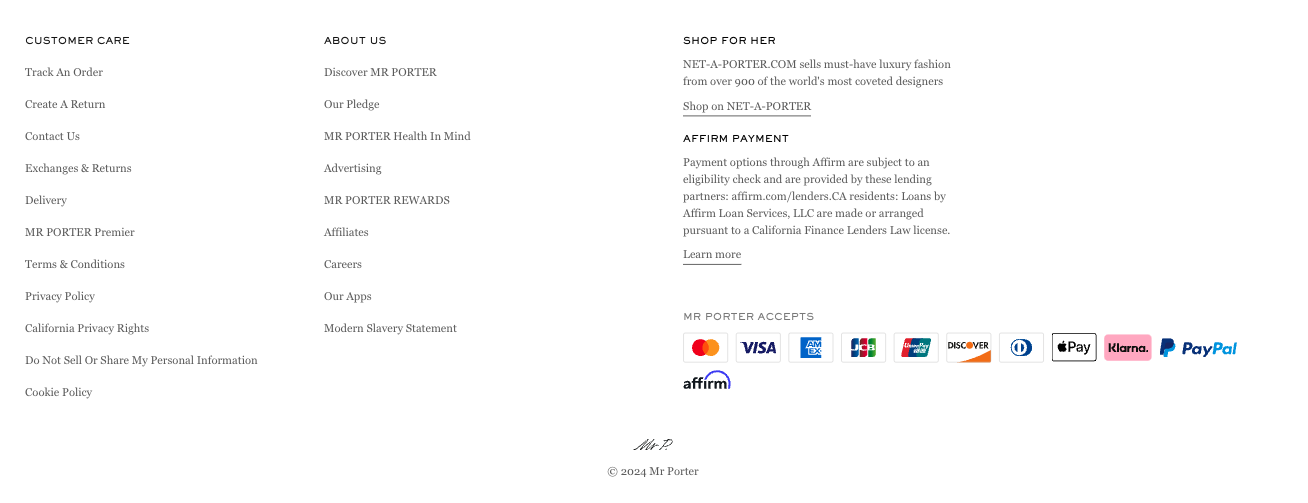
Source: mrporter.com
Or, if you have the resources, you could even design custom trust badges to communicate that your brand offers free returns, quality guarantees, or 24/7 customer service. And, of course, don’t forget to show off any third-party certificates or awards your organization has earned. These badges — like the Semrush Winner illustration on Prosperity Media’s Digital PR Agency page — can be an excellent way to establish your brand’s credibility and competence.
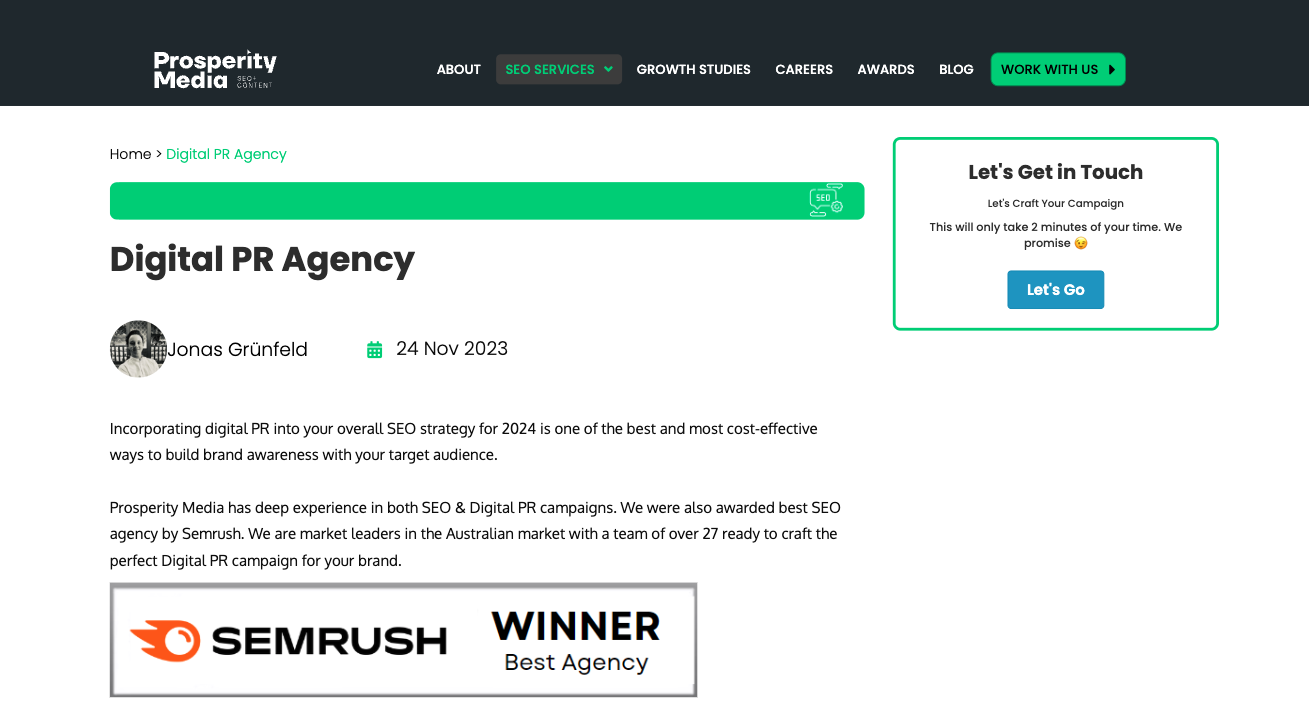
Source: prosperitymedia.com.au
Employ Authentic Social Proof to Back Up Your Claims
For a slight upgrade of the previous technique for displaying expertise and gaining your prospects’ trust, why not take your social proof to the next level?
Yes, showing off trust signals can be a great way to convince your audience to convert. However, you can achieve even more positive results by looking at your existing social proof website content and finding ways to elevate it.
For instance, TINT’s research revealed that 75% of consumers know when they’re being advertised to. So, to form a clear picture of whether a solution or service does what they need it to do, they seek out more authentic formats of social proof — like user-generated content.
The great thing about UGC is not just that it’s trustworthy and authentic. It also provides a genuine insight into the capabilities of your product. Plus, it’s a type of content you can easily source — whether by encouraging customers to leave product reviews or by employing social listening techniques to identify conversations mentioning your brand, product, or service in a positive light.
Then, all you have to do is position that UGC in a highly visible spot on your website so that it has the highest possible chance of being noticed by web visitors.
For a great example of how you can employ UGC content to demonstrate expertise and build brand trust, check out Vidpros. This brand includes a handy UGC section on its homepage where existing clients share their experiences with the brand’s services. It’s a fantastic way to boost authority. The videos show powerful, unfiltered feedback from the company’s satisfied customers.
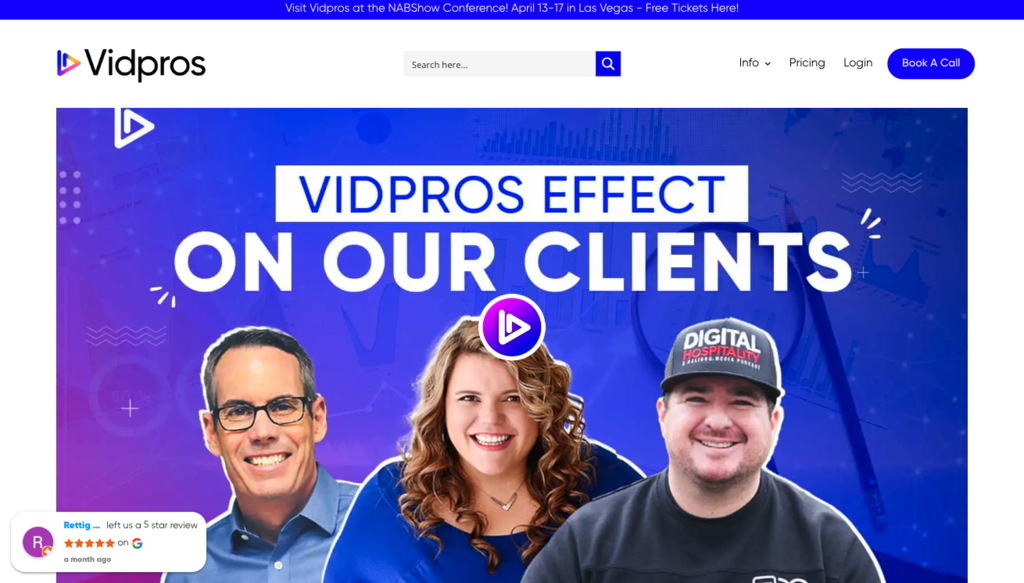
Source: vidpros.com
Prioritize Helping Your Audience Over Making a Sale
Sometimes, gaining your prospects’ trust isn’t about telling them you have their best interest at heart. More often than not, encouraging people to convert requires you to show a dedication to helping your target audience — even if it means not making a sale.
So, if you’re exploring ways to utilize website content to boost brand authority, consider investing in resources to help your prospects solve their pain points.
For example, check out the Legal Essentials for Business on the Business for Sale website. You’ll see that it’s chock-full of information about acquiring or starting a business. Even though the brand acts as a marketplace for selling and buying existing companies, this guide doesn’t include a single conversion-oriented link or CTA. And why is that?
The content team at Business for Sale comprehends that making a buying decision isn’t just about responding to marketing messages for the brand’s target audience. Instead, it’s about being confident in their judgment and trusting the marketplace to hold their best interest at heart.
Similarly, if you check out the 8fit Workouts page, you’ll see that the brand provides six free videos for non-members. And even though this may seem like a counterintuitive business decision, it’s the best strategy for gaining web visitors’ trust and demonstrating the brand’s expertise.
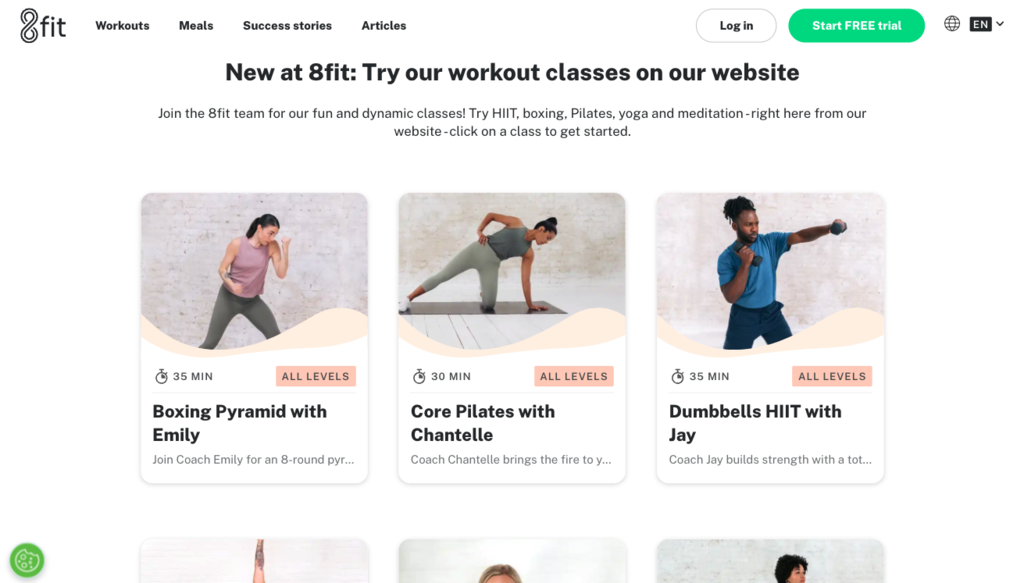
Source: 8fit.com
Educate Web Visitors and Help Them Make the Best Buying Decision
Sometimes, the best way to demonstrate your expertise (while gaining your audience’s trust) is by providing web visitors with educational content.
Ultimately, resources that teach your prospects something new aren’t just an excellent way to prove your customer-oriented approach to running your business. They can be a great way to boost conversions, seeing that educational content makes buyers 131% more likely to buy.
For example, if you look at Canva’s Design School site section, you’ll notice it’s filled with several educational resources.
Seeing how each of these resources ties back to a service provided by the company, investing in this type of content makes perfect sense. And that’s not only because the brand boosts its authority through sharing knowledge with prospects. Many of these services are free, making people more likely to trust Canva and increasing their chances of becoming customers.
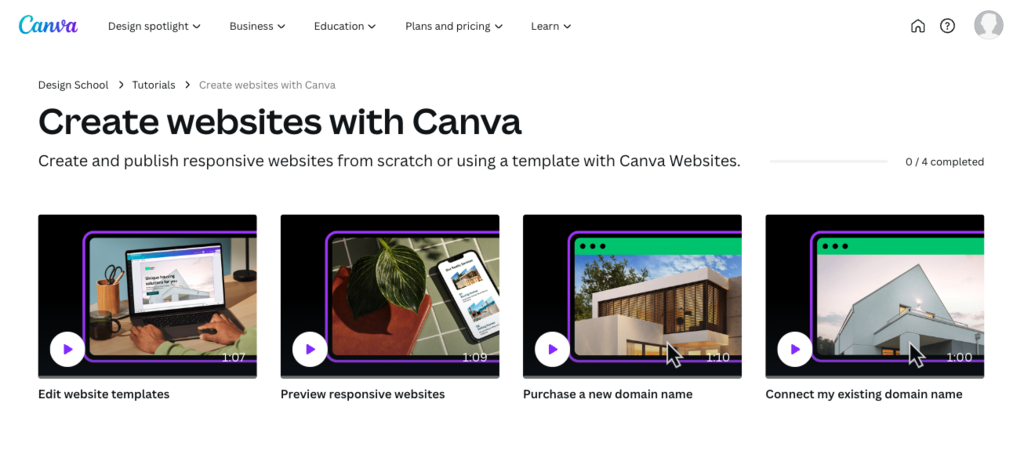
Source: canva.com
Collaborate with Scientists and Experts
Lastly, as you explore ways to utilize website content to demonstrate your brand’s credibility, don’t forget to diversify the voices acting as spokespeople for your business.
After all, the latest research on trust shows that 74% of people trust scientists as much as they do peers when collecting product recommendations. So why not employ these experts to help prove your brand’s trustworthiness?
One of the best ways to implement this tactic is to commission guest posts from industry authorities. However, knowing that video content often performs better than text (especially for product research), try to ensure that these trust-building resources come in multiple formats.
For inspiration, you can check out the Eight Sleep homepage. This brand’s social proof section presents a wonderful way to employ expert voices to improve your brand’s trustworthy reputation. The page features feedback from scientists, and there are also a few athlete and celebrity endorsements thrown into the mix. This helps demonstrate that the products satisfy a wide range of needs and provide excellent value for money.
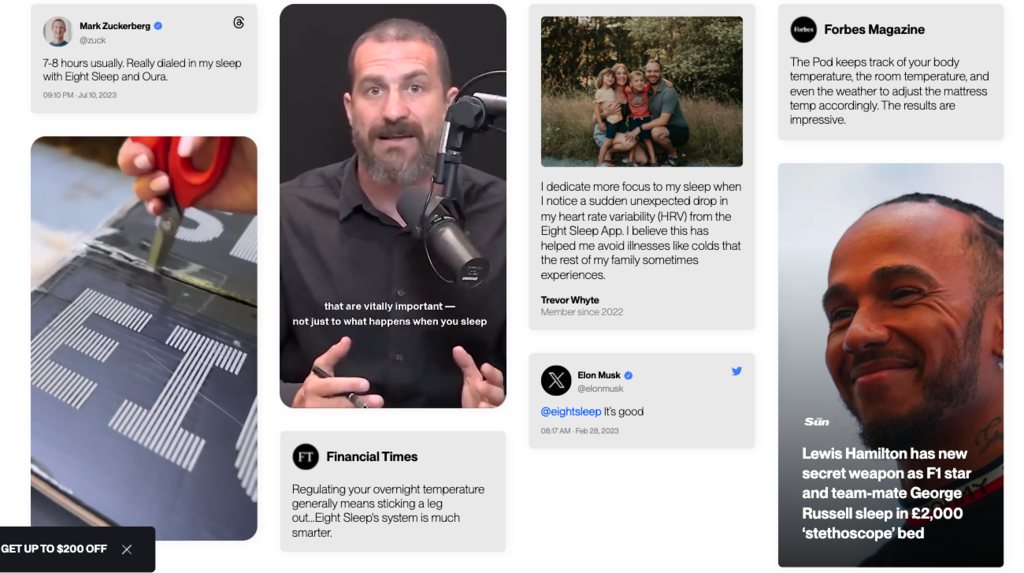
Source: eightsleep.com
Final Thoughts
There are many ways you can employ web content to encourage your target audience to trust your brand. Naturally, the strategies that will work best for you hugely depend on your goals and your prospects’ preferences.
So, as you add the formats discussed in this guide to your site, don’t forget to test their effectiveness. You might find that one method of building trust works better for your business than others. Or, you might discover that the best way to earn your customers’ confidence is to do something entirely different that has nothing to do with content — like improving your customer care practices.








